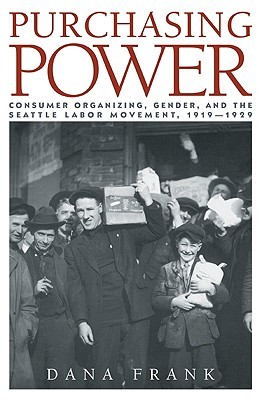
- We will send in 10–14 business days.
- Author: Dana Frank
- Publisher: Cambridge University Press
- ISBN-10: 0521383676
- ISBN-13: 9780521383677
- Format: 16.3 x 24.1 x 2.5 cm, kieti viršeliai
- Language: English
- SAVE -10% with code: EXTRA
Reviews
Description
This book analyzes consumer organizing tactics and the decline of the Seattle labor movement in the 1920s, as a case study of the U.S. labor movement in the 1920s. The book examines the transformation of the movement after the famous Seattle General Strike of 1919 by showing that workers organized not only at the point of production, but through politicized consumption as well, employing boycotts, cooperatives, labor-owned businesses, and union label promotion. It pays special attention to the gender dynamics of labor's consumer campaigns, as trade union men sought to persuade their wives to "shop union," and to the racial dynamics of campaigns organized by white workers against Seattle's Japanese-American businesses.
EXTRA 10 % discount with code: EXTRA
The promotion ends in 23d.11:50:43
The discount code is valid when purchasing from 10 €. Discounts do not stack.
- Author: Dana Frank
- Publisher: Cambridge University Press
- ISBN-10: 0521383676
- ISBN-13: 9780521383677
- Format: 16.3 x 24.1 x 2.5 cm, kieti viršeliai
- Language: English English
This book analyzes consumer organizing tactics and the decline of the Seattle labor movement in the 1920s, as a case study of the U.S. labor movement in the 1920s. The book examines the transformation of the movement after the famous Seattle General Strike of 1919 by showing that workers organized not only at the point of production, but through politicized consumption as well, employing boycotts, cooperatives, labor-owned businesses, and union label promotion. It pays special attention to the gender dynamics of labor's consumer campaigns, as trade union men sought to persuade their wives to "shop union," and to the racial dynamics of campaigns organized by white workers against Seattle's Japanese-American businesses.


Reviews